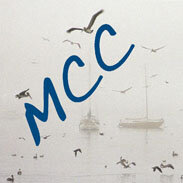 Caltrans completed a Transportation Concept Report in April 2018 for Highway 1 in San Mateo County. The report evaluates current and projected conditions to communicate a vision for development over a 25-year planning horizon (to 2040). The future concept generally keeps the route’s existing capacity and function.
Caltrans completed a Transportation Concept Report in April 2018 for Highway 1 in San Mateo County. The report evaluates current and projected conditions to communicate a vision for development over a 25-year planning horizon (to 2040). The future concept generally keeps the route’s existing capacity and function.
Summary of strategies for Hwy 1 between Hwy 92 and Pacifica (Segment B):
- Support “Connect the Coastside” efforts.
- Support completion of CA Coastal Trail.
- Implement new Traffic Operations Systems elements including Closed Circuit TV and Variable Message Signs.
- Maintain & improve Park & Ride lots.
- Improve coastal community safety & mobility with consistent roadway edges, shoulders, pedestrian crossings & roundabouts.
- Monitor and plan for sea level rise.
In 2017, Caltrans and the Coastal Commission entered into a Partnership Agreement with a focus in two areas: Sea Level Rise and the California Coastal Trail. Recent CCC permits for emergency armoring to protect the highway are only temporary until longer-term solutions can be found. Caltrans is studying an inland realignment of Hwy 1 between San Gregorio and Pescadero (p. 37 of the report). It seems from the report that segment may be a higher priority for realignment than Surfers’ Beach in El Granada.
The report acknowledges MIdcoast Local Coastal Program (LCP) policies:
- Maintaining SR 1 as a scenic two-lane route in rural areas
- Development of a Midcoast pedestrian/bicycle/multi-purpose path parallel to SR 1
- Preferential treatment for buses and shuttles in congested locations
- Recreational transit services; transit service for special events
- Improvements of bicycle and pedestrian facilities and crossings
- Limitations on new road or driveway connections to SR 1
Caltrans uses the principles of Context Sensitive Solutions to gauge and plan for the appropriate treatment of highway facilities in a variety of corridor settings, taking into account the needs of all users. Constructing medians in some community areas can have the added benefit of providing a refuge area for pedestrians trying to cross the road, so that they would only have to gauge traffic and cross in one direction at a time. Within fringe and community areas, additional enhancements could include striping of Class II bike lanes and/or painted shoulders to further delineate separation of the bikeway from the vehicle travel way, and to provide improved sight lines and visibility for pedestrians, bicyclists, and motorists preparing to cross or enter the travel way, and space for motorists to move for passing emergency responders. These improvements could also be used to signal a change in context, and help narrow the perceived lane width to encourage speed reduction in high activity areas.
Caltrans set a statewide goal in its 2015-2020 Strategic Management Plan, of tripling bicycling trips and doubling the number of pedestrian trips by 2020. The report acknowledges the 2011 San Mateo County Comprehensive Bicycle and Pedestrian Plan, which identifies the Hwy 1 Corridor as the “Pacific Coast Bikeway” with both existing and proposed improvements for Class I, II, and III segments along its length.
